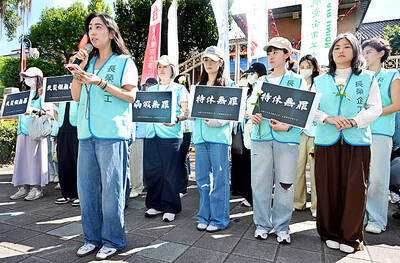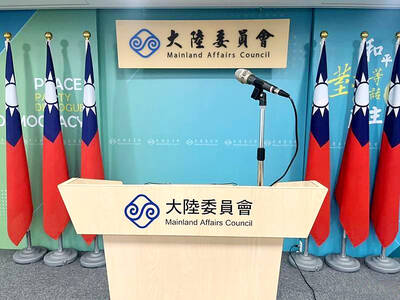Japanese consumers and businesses have been long known for their partiality to expensive, premium-grade homegrown rice, and rice farmers in Japan have been well protected by high tariffs on imports.
However, a small but growing number of them are rethinking their loyalty to such produce because of declining household incomes and fears about radiation contamination from last year’s Fukushima Dai-ichi nuclear power plant disaster, which occurred in one of Japan’s major rice-producing areas, according to a recent New York Times report.
More Japanese are now competing for the tiny amount of cheaper foreign alternatives that the Japanese government makes available to retailers, the report said.
Citing official Japanese records, the report said just 10,000 tonnes of imported rice were made available last year, a fraction of the average of 9 million tonnes of rice sold in Japan annually.
Since 1995, Japan has imported about 700,000 tonnes of rice tariff-free annually, most of which it diverts to uses that do not compete with Japanese rice, such as livestock feed and emergency stockpiles, the report said.
Meanwhile, a Council of Agriculture official has been quoted as saying by local media that Japanese grain importers managed to obtain a quota to buy 440 tonnes of rice from Taiwan last year, a new record since Taiwan resumed rice exports to Japan in October 2004.
Japanese grain traders have procured 1,500 to 2,000 tonnes of rice from central and southern Taiwan so far this year, business sources said, adding that Taiwan-grown rice has been sold to Japan at good prices.
For instance, a new rice strain dubbed “Kaohsiung 145” has been shipped to Japan at a price of US$1,600 per tonne, or about NT$48 per kilogram, higher than the NT$24 to NT$26 obtained in the domestic market.
Lin Ting-san (林定三), a Japan-accredited rice examiner, who has helped introduce Japanese rice traders to Taiwanese farmers, said Japanese importers had been searching for fine-quality rice in China, Thailand and several other places.
“Although rice alternatives from those places tended to be cheaper than Taiwan-grown varieties, their quality mostly fell short of expectations,” Lin said.
Major Japanese grain traders have therefore shifted their orders to Taiwan, he said.
Chen Yen-ching (陳燕卿), a Shennong Agriculture Award-winning rice farmer in Taoyuan County, said a Japanese rice trader purchased 80 tonnes of “Taiken 14” rice from the county in April this year.
“The texture and flavor of Taiken 14 are similar to premium Japanese-grown rice and suitable for household consumption,” Chen said, adding that the Taiken 14 rice has been sold in Japanese supermarket chains and other retail stores.
Chang Chih-chao (張智超), head of the Hualien County Government’s Agriculture Department, said a Japanese company has struck a deal with farmers in his county to purchase about 60 hectares of rice crops.
“Rice seedlings have been planted in several of our townships and villages,” Chang said.
Another Japanese food company, Kanematsu Co, has ordered 500 tonnes of Shangshui rice from Greater Tainan’s Houbi District (後壁), agricultural sources said.
About 80 tonnes of Shangshui rice was shipped to Japan in February after passing Japanese inspection, and the rest of the order should be delivered in late September, the sources said.
While Taiwan-grown rice has been well received in Japan, the New York Times report said whether there will be a significant push by Japanese consumers or businesses for more foreign rice is still uncertain.
The Japanese farming lobby, which has strong political clout, remains opposed to an opening-up, it added.
“Still, waning loyalties to homegrown rice could have immense implications for a country whose politics, society, economy and even national identity are entwined with rice cultivation,” the New York Times report said.

A drunk woman was sexually assaulted inside a crowded concourse of Taipei Railway Station on Thursday last week before a foreign tourist notified police, leading to calls for better education on bystander intervention and review of security infrastructure. The man, surnamed Chiu (邱), was taken into custody on charges of sexual assault, taking advantage of the woman’s condition and public indecency. Police discovered that Chiu was a fugitive with prior convictions for vehicle theft. He has been taken into custody and is to complete his unserved six-month sentence, police said. On Thursday last week, Chiu was seen wearing a white

The Taoyuan Flight Attendants’ Union yesterday vowed to protest at the EVA Air Marathon on Sunday next week should EVA Airway Corp’s management continue to ignore the union’s petition to change rules on employees’ leave of absence system, after a flight attendant reportedly died after working on a long-haul flight while ill. The case has generated public discussion over whether taking personal or sick leave should affect a worker’s performance review. Several union members yesterday protested at the Legislative Yuan, holding white flowers and placards, while shouting: “Life is priceless; requesting leave is not a crime.” “The union is scheduled to meet with

‘UNITED FRONT’ RHETORIC: China’s TAO also plans to hold weekly, instead of biweekly, news conferences because it wants to control the cross-strait discourse, an expert said China’s plan to expand its single-entry visa-on-arrival service to Taiwanese would be of limited interest to Taiwanese and is a feeble attempt by Chinese administrators to demonstrate that they are doing something, the Mainland Affairs Council said yesterday. China’s Taiwan Affairs Office (TAO) spokesman Chen Binhua (陳斌華) said the program aims to facilitate travel to China for Taiwanese compatriots, regardless of whether they are arriving via direct flights or are entering mainland China through Hong Kong, Macau or other countries, and they would be able to apply for a single-entry visa-on-arrival at all eligible entry points in China. The policy aims

The government yesterday donated US$200,000 to the Philippines to support post-earthquake relief and recovery efforts, following a powerful magnitude 6.9 quake that struck Cebu Province late last month, killing at least 72 people and injuring 559 others. The donation was presented earlier yesterday by Representative to the Philippines Wallace Chow (周民淦) to Cherbett Maralit, deputy resident representative of the Manila Economic and Cultural Office, at Taiwan’s representative office in Manila. In his remarks, Chow expressed concern for those affected by the magnitude 6.9 earthquake that struck the central Philippines on the night of Sept. 30. "We sincerely hope for the earliest possible